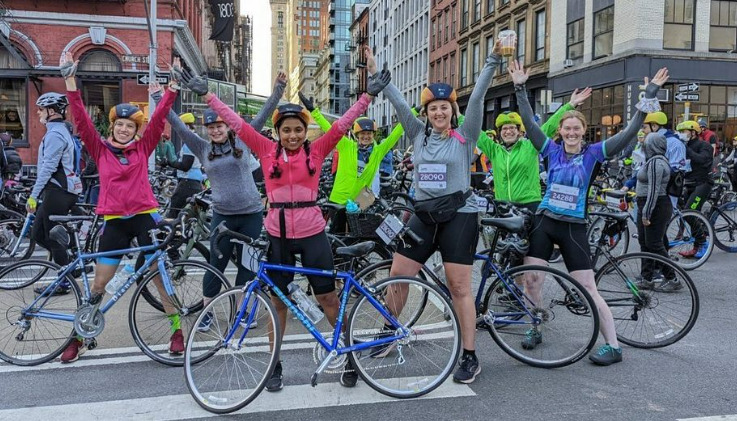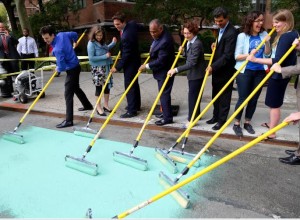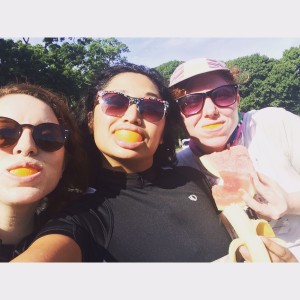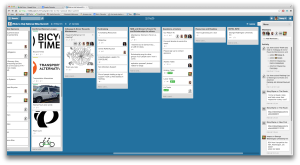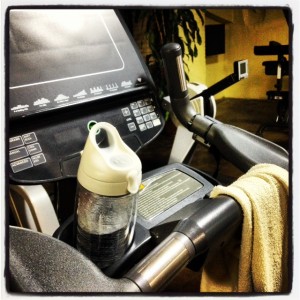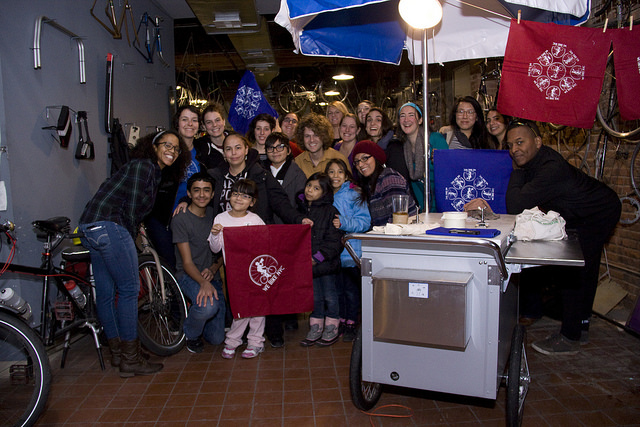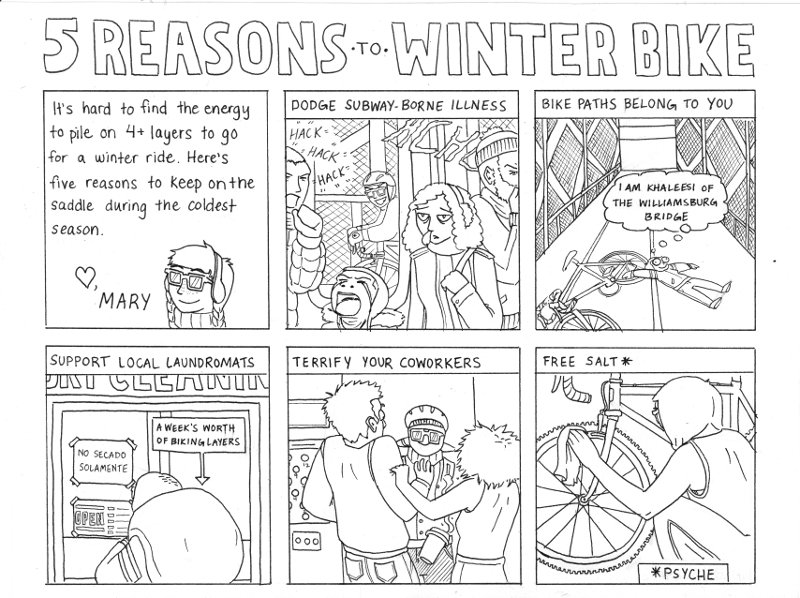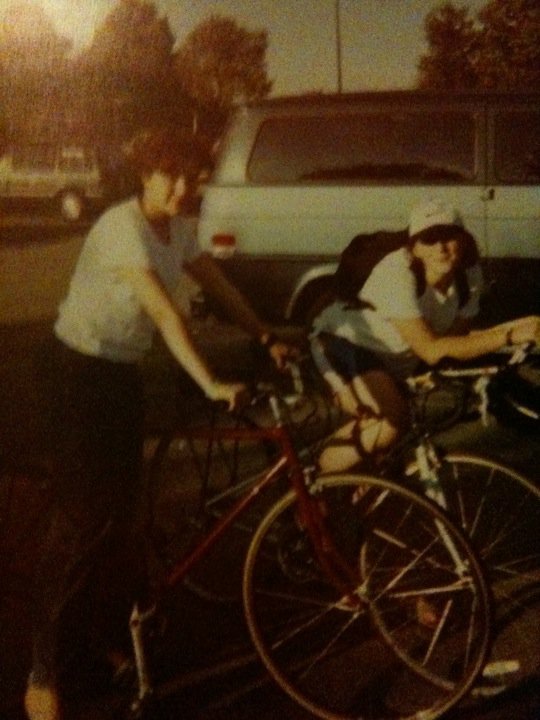By Meg Ausen

WE Bike NYC rides Cranksgiving!
Bike Lights – What’s the best for me?
As we lose more and more daylight during winter, our chances of riding in the dark increase greatly. If you haven’t already done so, now is definitely the time to check your bike lights and if needed get some new ones. Not only is it for your safety, but it is New York City law that bicyclists use a white headlight and a red taillight from dusk until dawn. Where to start? We’ve compiled some ideas below. Ultimately, you need to figure out what will be the best light for you based off of the types of roads you are riding, the amount of time you are riding in the dark, and your budget. As with most accessories related to our bicycles, ‘you get what you pay for’ applies to lights.
How bright of a light do I need – what’s a Lumen?
Brighter is always better. Most bike lights have different beam pattern settings allowing for a steady stream of light or a blinking strobe, providing cyclists different ways to be seen (both from oncoming traffic and from behind) and to see the path in front of them. Some claim that while a flashing light better grabs the attention of a driver to alert them that you are on the road, a steady stream of light can prove more useful to drivers for judging the distance they are from you and your bike. Remember to be mindful of how bright your front lights are to oncoming cyclists or pedestrians – a steady stream of light can be less aggravating then a strobe. Consider the roads you bike on when setting your beam pattern – if commuting primarily on streets with streetlights, choosing a front light with a narrow-focus beam should be sufficient. If you often ride along darker roads or trails, you will definitely want a wide-focus beam for better peripheral vision.
Nowadays, many light manufacturers measure by lumens. A lumen is a unit of measurement which quantifies the amount of light falling on the object you want to be illuminated. Lumens are measured at a uniform distance and describe the light intensity of each lighting unit. For example, one lumen is equivalent to the light of a candle one foot away. Most bike lights have a lumen rating (check the packaging or specs if purchasing online).
Check out this website for a visual of what different lumen intensities look like for front lights.
Front Lights: to be seen or to see? That is the Question
Actually, it’s best to both be seen by traffic and to be able to clearly see the road in front of you. As reviewed here, you can have both with lights like the Cygolite Dash 350. Basically, what this light does is combines a strobe with a steady beam, offering riders the best of both worlds. Priced at around $50, it also won’t break your budget and is rechargeable via a USB port. Here’s another useful website which offers a comparison of ranked lights based on cost, brightness, beam quality, battery life and portability.
Other great head lights:
Tail lights
The same website referenced above has reviewed and voted the Cygolite Hotshot Micro 30 as the best taillight that isn’t going to break your wallet. Testers sitting in the driver’s seat of a car found this light to be very visible due to its attention-getting flashing pattern and bright LED light. This light sells for around $30.
Other great taillights:
Other Factors to Consider when choosing lights
If you are using a rechargeable light, keep in mind the length of your commute and total riding time any given day. Take into consideration the battery life of your light so that you are always charged up and ready to go. Many lights have low-power modes which will extend the battery’s life between charging or for the battery-powered options, extend the life before your batteries go kaput. Strobe modes also tend to use less battery power than a constant beam of light.
If you have space, keep a set of emergency lights with you. These don’t need to be a second set of super bright lights described above, just some simple lights that will get you home if you have nothing else (think the free lights from Bike New York).
Other forms of Visibility
In addition to lights mounted to your bicycle, investing in reflective gear is always encouraged to make yourself more visible.
Have any bike light tips, questions, or just want to chat about bike stuff? Head over to our Female Bike Forum on Facebook!
**Products listed in this article are not endorsed by WE Bike NYC. Reviews were identified through Internet research.
